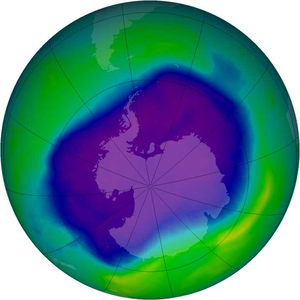
- Image via Wikipedia
Last month we blogged about the ozone layer, a topic that used to be more popular between the 80s and 90s but which still is very relevant today as the problem of ozone depletion hasn’t gone away. Quite the contrary.
According to a UN press release, earlier this month there was an international meeting (the 21st Meeting of the Parties to the Montreal Protocol) in Port Ghalib, on the Red Sea, to discuss the issue. “Countries meeting under the ozone layer protection treaty made progress on a wide range of issues, including the use of chemicals to kill pests on international commodity shipments up to advancing action to destroy banks of CFCs in old and stockpiled equipmentâ€, it said.
However, participating nations could not reach consensus on the high profile issue of whether a group of gases, currently controlled under the international climate agreement, might be better controlled and phased-down under the ozone treaty. The issue will now come before the UN climate convention meeting taking place in Copenhagen next month.
Scientists are concerned that if synthetic gases known as hydroflurocarbons (HFCs) become the replacement chemicals of choice in products such as refrigeration systems and air conditioners, their climate impact could become significant over the coming decades.
Those supporting action under the ozone treaty argue that a commitment to phase-down HFCs under the Montreal Protocol would catalyze action by industry to develop a range of new ozone and climate-friendly alternatives.
It seems like we’ll have to wait a bit longer to hear more about this. We’ll keep you posted.

![Reblog this post [with Zemanta]](https://img.zemanta.com/reblog_e.png?x-id=764ecbe6-6211-429d-ade8-ec636da6bf29)




